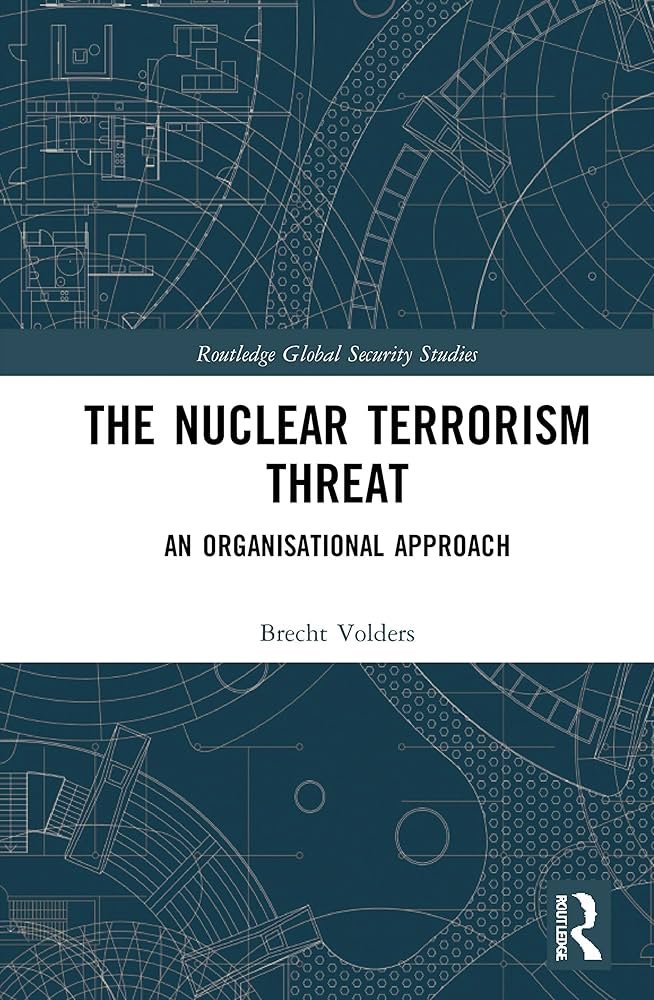Bercht Volders’ “The Nuclear Terrorism Threat: An Organisational Approach” provides a persuasive investigation into the threat that nuclear terrorism represents to world security. The book investigates the relationship between indiscriminate terrorism and nuclear proliferation, adopting a future perspective to understand the organisational challenges involved in carrying out nuclear terrorist operations.
Volders’ work examines the themes and ideas of nuclear terrorism on their terms, offering a thorough knowledge of the fundamental principles. The author emphasises the need of analysing the possible repercussions of nuclear terrorism, notwithstanding its low probability, by examining the vulnerability of specific nuclear weapon nations, such as Iran and North Korea.
The author’s analysis of the book’s themes presents an interesting perspective. Volders skillfully demonstrates the theoretical significance of his claims using a range of data and case studies. He prioritises theory generation over theory testing, which provides more in-depth knowledge of the difficulties related to nuclear terrorism. By addressing two critical questions, the book contributes to the validity of future estimates of the threat of nuclear terrorism. One is why is there widespread political concern about nuclear terrorism. Second, what are the difficulties for a terrorist organisation in planning a nuclear attack?
Volder suggests that, while nuclear terrorism is unlikely, the effects may be disastrous. He underlines the significance of taking a methodical approach to analysing the elements that influence a terrorist group’s capabilities, measures, and organisational structure.
The early chapters of the book lay the framework for the book’s major argument by emphasising the crucial need of taking a systematic approach to solving the challenges inherent in creating a nuclear device. Volders recognises the major challenges in getting fissile material, constructing a device, transferring non-nuclear or nuclear components, and detonating the device.
Volders presents a strong argument for the need for the state to closely monitor terrorist organisations that are attempting to get nuclear weapons. Volders brought attention to a few factors that are essential for a terrorist organisation despite the literature’s rarity of emphasising organisational design. The organisation must, first and foremost, be linked together into a group with a clear hierarchy and control levels and a specific concentration on a speciality in the procurement, assembly, and explosion of nuclear materials. Second, an organization’s structure—which may be more operational or organic—can significantly affect the trade-off between effectiveness and efficiency. Thirdly, an organization’s function and philosophy play a key part in why it might want to obtain nuclear weapons. Religious organisations are more likely to be perpetrators of nuclear terrorism, with Aum Shinrikyo as a prime example.
The incorporation of case studies throughout the later chapters further strengthened Volders’ arguments. By examining real-world scenarios such as Los Alamos, the South African PNE program, Aum Shinrikyo’s activities, and the 9/11 attacks, he effectively demonstrates the non-routine elements and challenges that terrorist organizations might encounter in pursuing nuclear terrorism.
As a solution to this challenge, the author proposes that the nuclear security regime should focus more on the organisation’s access to the necessary skills and knowledge, emphasising the lack of political utility of a nuclear terrorist plot. Volders emphasises the importance of counter-terrorism efforts in targeting potential recruits or members of a terrorist organisation with particular military, trafficking, or networking skills. The likelihood of nuclear terrorism can be limited by intensifying the trade-off between effectiveness and efficiency, leading to detection, delays, or operational failures. The book concludes that under similar dynamics identified in these cases, terrorist organisations investing in the adopted nuclear terrorism scenario would be more committed to carrying out their plans.
Altogether, “The Nuclear Terrorism Threat: An Organisational Approach” is an insightful book that offered a new perspective on the potential for nuclear terrorism. Throughout the book, Volders made persuasive arguments for the need to re-evaluate traditional nuclear terrorism threat assessments and focus more on the organisational strategies of terrorist groups. His analysis provides a compelling case for the future potential of nuclear terrorism and measures that can be taken to prevent it. This book is recommended for readers interested in global security, counter-terrorism efforts, and the complexities surrounding nuclear terrorism.
CASS LAhore

The Centre for Aerospace & Security Studies (CASS) was established in July 2021 to inform policymakers and the public about issues related to aerospace and security from an independent, non-partisan and future-centric analytical lens.
CASS Newsletter
CASS Galleries

@2025 – All Right Reserved with CASS Lahore.


